Updated Result
3/11/2011 (Mw 9.0), Tohoku-oki, Japan
Shengji Wei (Caltech), Anthony Sladen (Geoazur-CNRS) and the ARIA group (Caltech-JPL).
Location of Epicenter |
Amount of Slip on Fault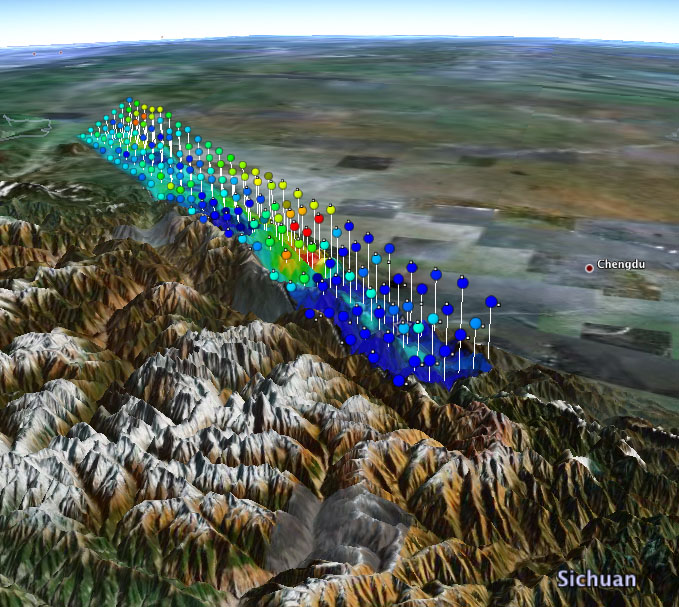
View in Google Earth (requires Google Earth) Colors show the amount of slip on different sections of the fault zone. Two views are shown (either view can be de-selected on the Google Earth sidebar):
|
Overview
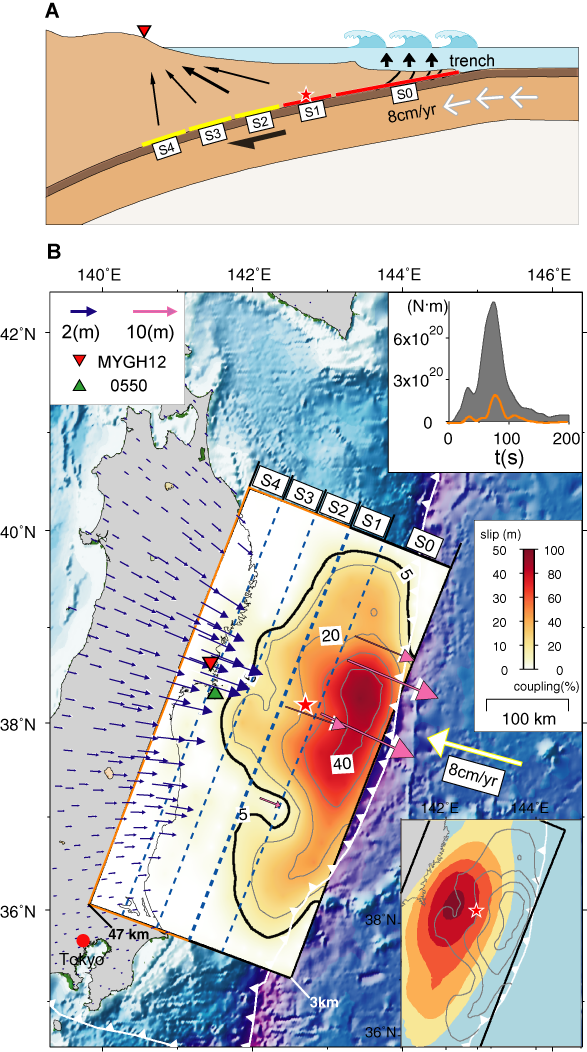
|
The Tohoku-oki earthquake is located at the boundary between the Pacific plate and the North American plates. These plates are converging at about 8 cm/year. The top figure shows the motion of the subducting plate and the location where the earthquake happen.
The rectangle in the lower figure shows the location and length of the rupture zone. The red star indicates the epicenter. The rupture was bilateral, i.e., it spread away from the epicenter in both the north and south directions, taking about 2 minutes (see moment-rate plot in the inset) to cover a total of 400 km (250 miles). This magnitude 9.0 earthquake was more than 500 times stronger than the Haiti earthquake of January 2010. The colors in the middle of lower figure shows the slip amplitude (i.e., the amount by which the land on one side of the fault moved with respect to the land on the other side). The motion was mainly thrust-fault (see animation).For more detail information in the figure, please see Wei et. al (2012, EPSL). The rupture originated about 21 km (13 miles) below the surface. In some places, the slippage along the fault was as large as 50 meters (150 feet), shown by red-shaded areas. The coast of Japan sprang east, into the ocean, in some places by as much as 5 m (16 feet), the motions are indicated by the blue arrows. Ocean bottom GPS stations recorded march larger coseismic offsets (as large as 24 meter) which are shown as purple arrows in the map. |
DATA Process and Inversion
We used 14 strong motion stations record by K-net and Kik-net in Japan and static offsets on more than 300 GPS stations.The GPS data are preliminary solution (version 1.0) provided by the ARIA team at JPL and Caltech. All Original GEONET RINEX data provided to Caltech by the Geospatial Information Authority (GSI) of Japan.
The relocated epicenter location is used (Lon.=142.68 ° Lat.=38.19 ° depth=21 km).See Chu et. al. (2011, EPSL) for more details about the relocation process. The dip angle is taken from the Global CMT solution (dip=10 °) and the 1D velocity model is extracted from the CRUST2.0 global tomography model (Bassin et al., 2000). The strike of the fault plane (strike=201 °) was adjusted to match the orientation of the subduction zone in the are of maximum slip.
Result
The solution is made of one relatively continuous slip patch stretched relatively equally north and south of the epicenter, with most of the slip concentrated above the epicenter.Cross-section of slip distribution
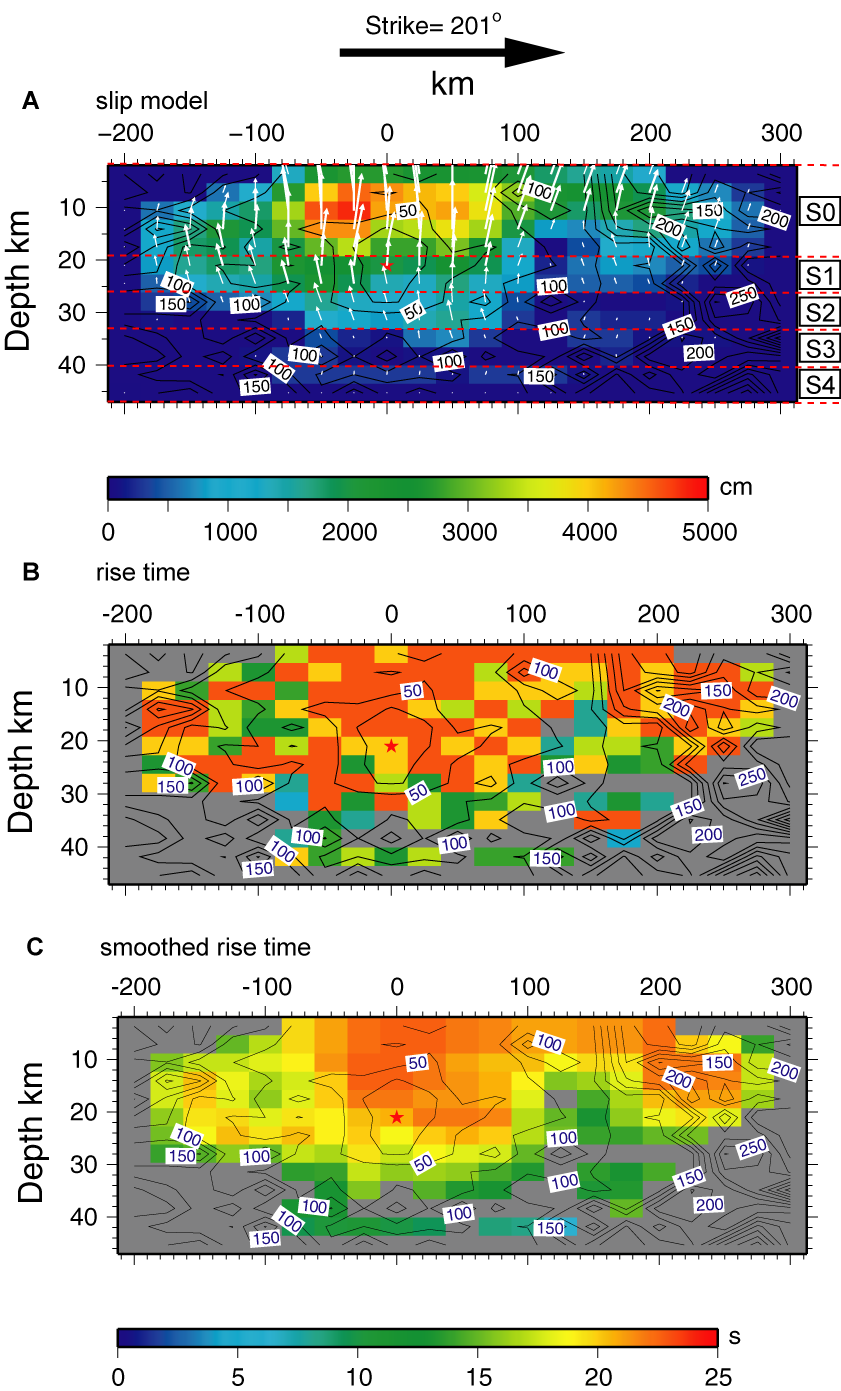
Figure 1:. Kinematic slip model (A) and rise time (B,C) for the Tohoku-Oki earthquake. The arrows indicate the slip direction and the contours show the rupture time. The rise time is plotted only for the subfault with slip amplitude larger than 2m. The strike (201 deg) and dip (10 deg) of the fault plane are defined according to the GCMT solution..
Comparison of data and synthetic seismograms
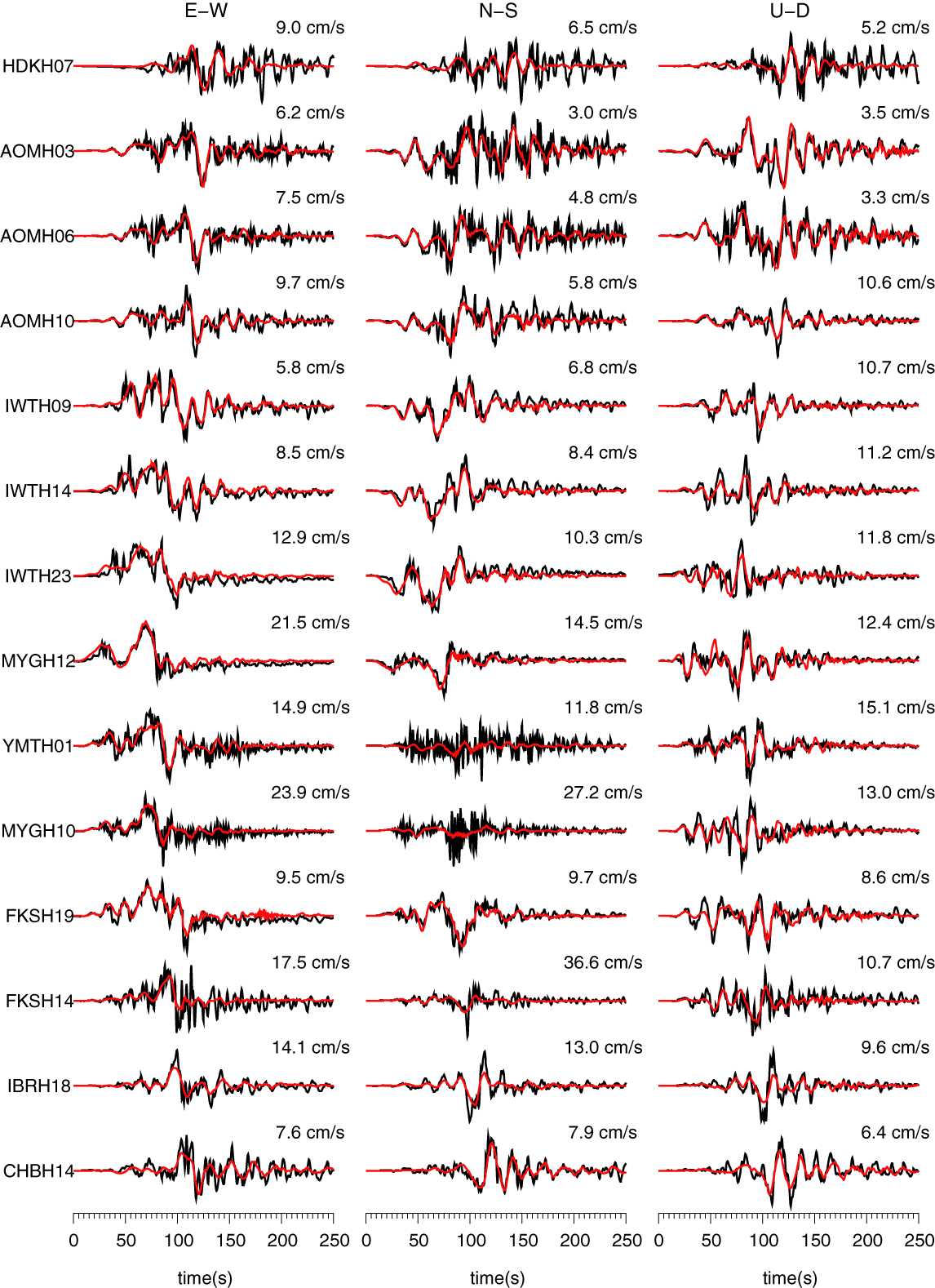
Figure 2: Comparison of the strong-motion observations (black) and the synthetics (red) generated by the slip model. Station names are indicated at the beginning of each trace with their location shown in the map. Data are aligned by the first P arrivals. Peak amplitude of observed records is indicated above the end of each trace.
Map view of the slip distribution

Figure 3: Slip model of the Tohoku-Oki earthquake. (A) A cartoon displaying the subducting plate motion, tsunami generation and the partitioning of the fault plane. (B) Map view of the slip model, which is divided into 5 segments from shallow to deep (S0¨CS4), indicated by the dashed blue lines. These segments are defined for display purposes to show slip as a function of depth, and to clarify which parts of the fault contribute to which parts of the observed signals. The coseismic geodetic horizontal displacement vectors are displayed in white while the synthetics fits are presented in blue (inland) and pink (offshore). The differentials are small with misfit vectors given in the supplement. The heavy black and gray lines indicate the slip contours. The lower corner inset shows the interseismic coupling model assuming deep coupling only (Loveless and Meade, 2010) and the coseismic slip model (gray contours). The upper right inset displays the moment rate function for the whole slip model (gray) and the contribution from S2 to S4 (orange). The strong motion station MYGH12 and high-rate GPS station 0550 are indicated by red and green triangles, respectively. The red star indicates the epicenter. (For interpretation of the references to color in this figure legend, the reader is referred to the web version of this article.)
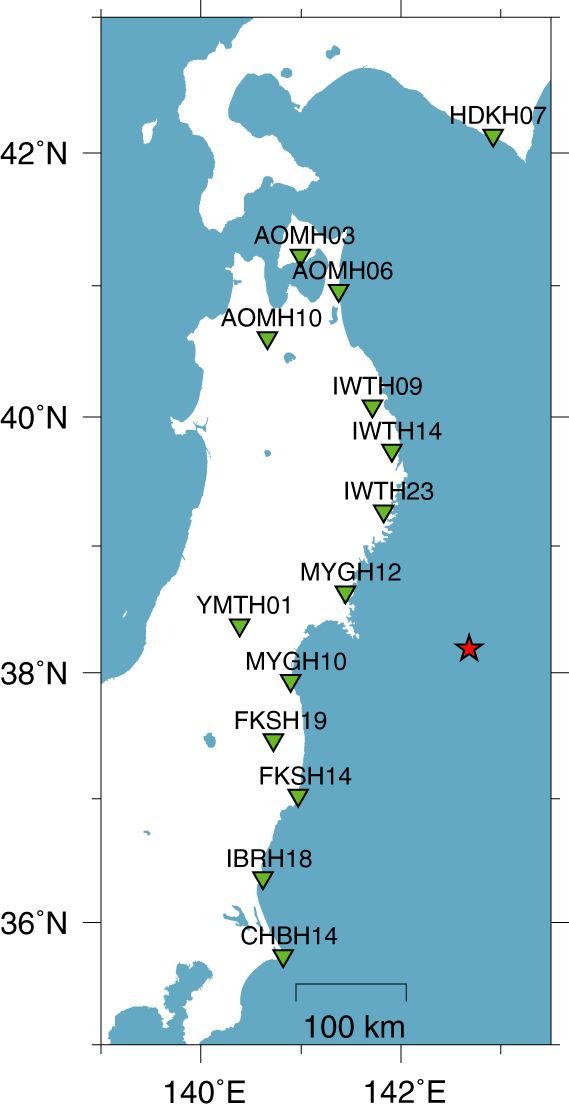
Figure 4: Distribution of strong motion stations used for the inversion.
Static fits and high-rate prediction for the GPS stations
(GPS solution processed by the Caltech-JPL ARIA group)
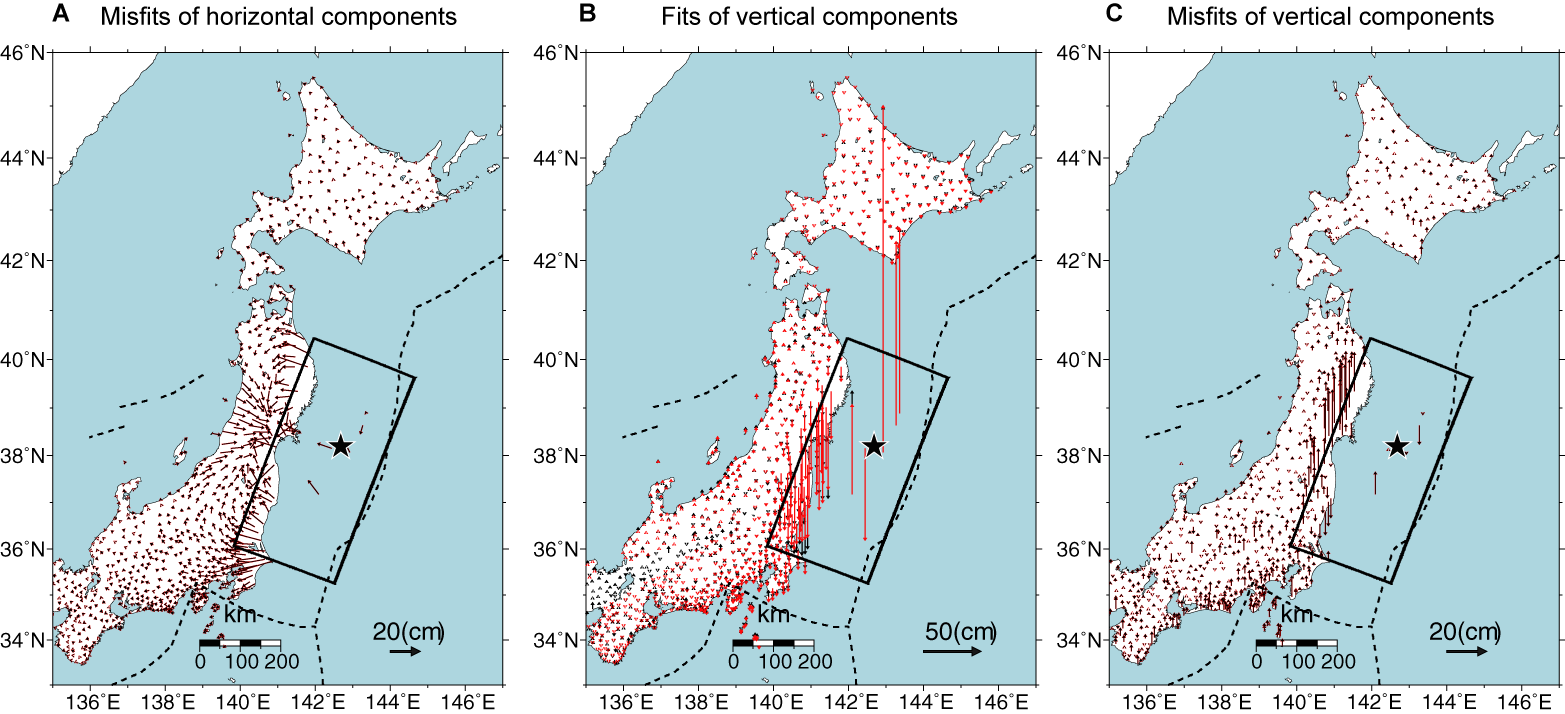
Figure 5: (A) Misfit between the synthetic and data for the horizontal GPS components. (B) Vertical GPS synthetics (red) and the data (black). (C) Misfit between the synthetic and data for vertical components. The black star in each panel is the epicenter, the black rectangle and dashed lines are the surface projection of the fault plane and plate boundary, respectively.
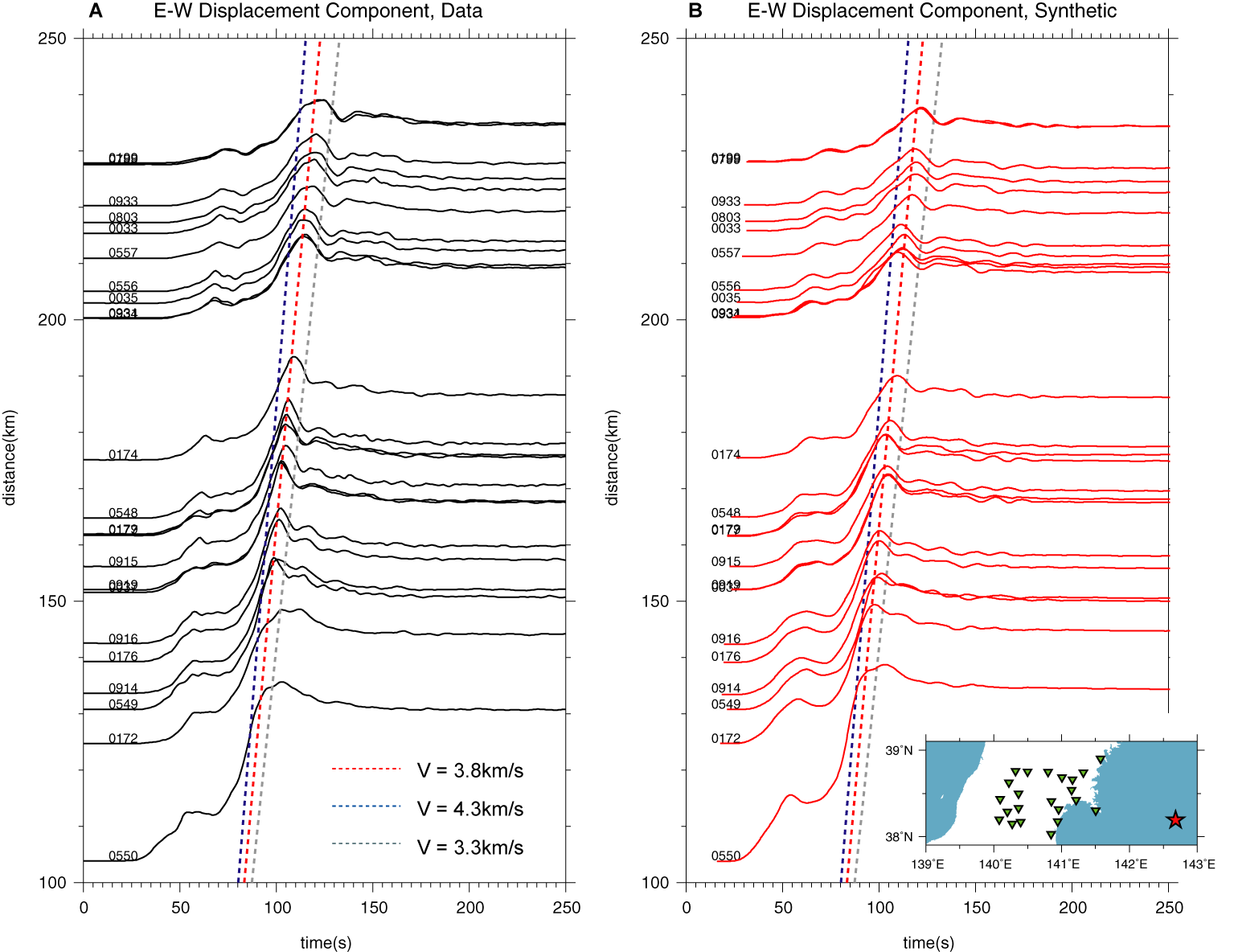
Figure 6: Here we display a comparison between high-rate GPS observations (A) with synthetic predictions (B) in a record section starting with station 0550. Stations and epicenter location are plotted in the inset of (B) with station names indicated at the beginning of the records. The data and synthetics are on the same scale displaying the true amplitude decay with distance and aligned on the origin time. Note that the amplitudes drop off rapidly due to the near-field contributions at the nearest stations. Here we use a 1D layered crustal model extracted from a 3D model (Takahashi et al., 2004) , containing three layers with thicknesses of 4, 10 and 16km and shear velocities of 2.5, 3,46 and 3.87km/s, respectively. Note that the sources for the S2 strip are within the bottom layer. Therefore, the apparent velocity of the direct S-wave should approach 3.87km/s asymptotically along this radial profile. This seems to be the situation, although the mantle phase Sn starts to contribute at the larger ranges controlled by the local crustal critical angle.
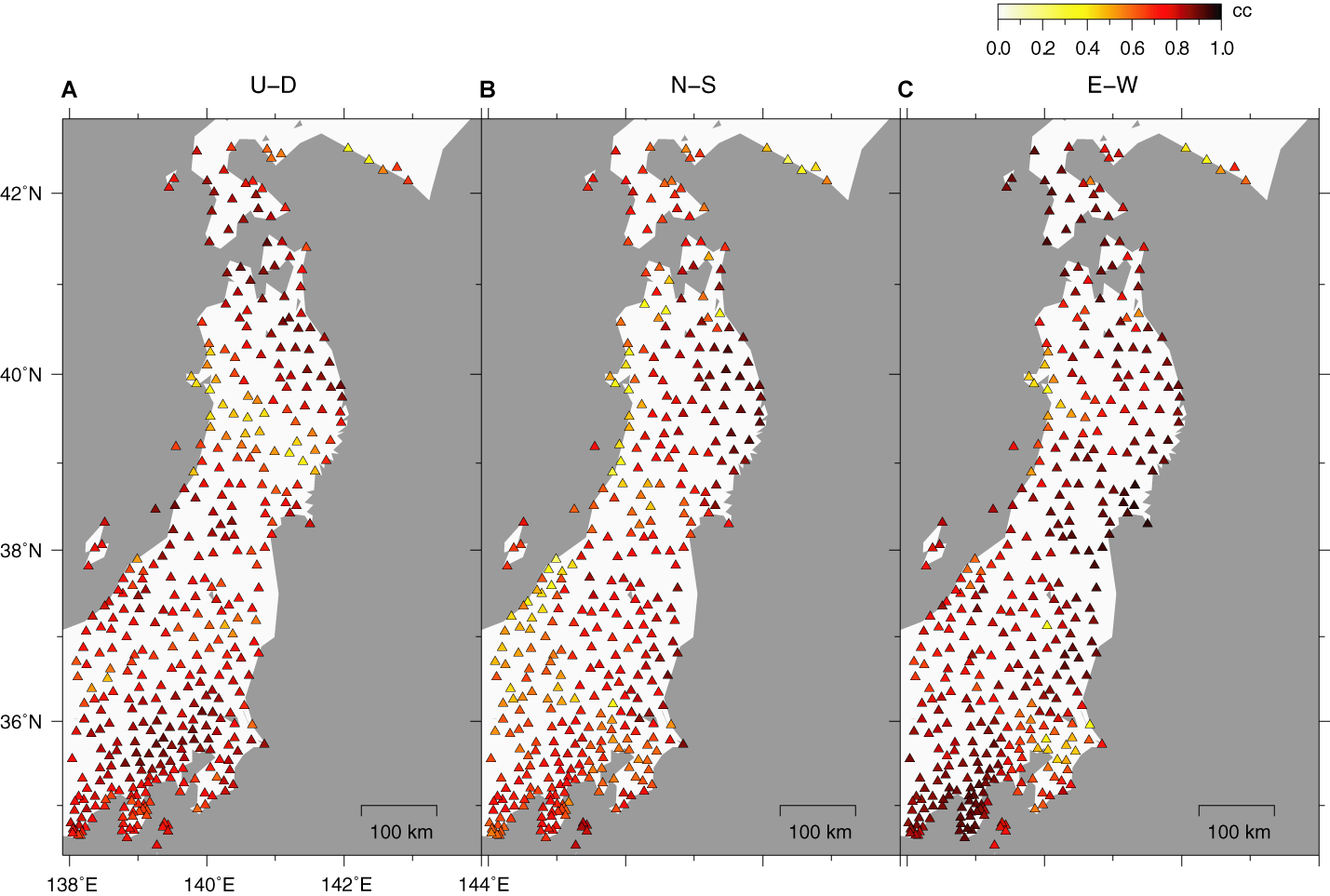
Figure 7: Prediction of all the high-rate GPS stations, stations are colored by the cross-correlation coefficients (cc) between the data and the synthetic where the synthetics are allowed to shift over a timing window to obtain the maximum cc. Many of the stations with low cc's are located in the basins as displayed in Fig.4G. Both data and synthetic are in velocity and filtered to 5s and longer. The percentage for U-D, N-S and E-W components with cc>0.7 are 72.3%, 52.1% and 83.3%, respectively.
Comments:
Please refer to Wei et. al. (2012, EPSL) if you would like to use this slip model.Download
(Slip Distribution)
| SUBFAULT FORMAT | FSP FORMAT | CMTSOLUTION FORMAT | SOURCE TIME FUNCTION |
References
Wei, S. J., R.W. Graves, J.P. Avouac and J.L. Jiang, Sources of shaking and flooding during the Tohoku-Oki earthquake: A mixture of rupture styles,Chu, R.S, S. J. Wei, D. V. Helmberger, Z. W. Zhan, L. P. Zhu, H. Kanamori, Initiation of the great Mw 9.0 Tohoku-Oki earthquake, Volume 308, Issues 3-4, 15 August 2011, Pages 277-283.
Ji, C., D.J. Wald, and D.V. Helmberger, Source description of the 1999 Hector Mine, California earthquake; Part I: Wavelet domain inversion theory and resolution analysis,
Bassin, C., Laske, G. and Masters, G., The Current Limits of Resolution for Surface Wave Tomography in North America, EOS Trans AGU, 81, F897, 2000.
GCMT project: http://www.globalcmt.org/
USGS National Earthquake Information Center: http://neic.usgs.gov
Japanese Meteorological Agency (JMA) http://www.jma.go.jp
Global Seismographic Network (GSN) is a cooperative scientific facility operated jointly by the Incorporated Research Institutions for Seismology (IRIS), the United States Geological Survey (USGS), and the National Science Foundation (NSF).
‹Back to Slip Maps for Recent Large Earthquakes home page